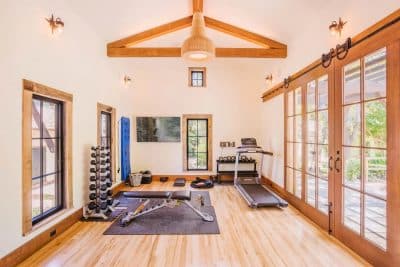
It starts with a spark. Not just in the fireplace, but in the design of the room. And right above that fire? The mantel.
The decorative mantel isn’t just a frame for your fireplace. It’s the crown. The centerpiece. The subtle hero that pulls the space together. It’s what your eye lands on when you enter the room. And it can completely change the mood of a space.
But with so many styles, materials, and sizes out there, picking the right one can feel like a guessing game. Should you go sleek and modern? Or cozy and rustic? And what about safety or fit?
This guide will break it all down. Style by style. Step by step. So, by the end, you’ll know what to look for, what to avoid, and how to make a mantel feel like it belongs in your home.
Why the Mantel Matters
Think of your fireplace as the stage. The mantel is the spotlight.
It draws attention. Sets the tone. And adds character to the room. Whether you want a bold statement or a quiet accent, the mantel makes it happen.
More than decor, it’s functional, too. A well-placed mantel gives you a space to decorate. Frame the TV. Add seasonal touches. Or display keepsakes that make your home feel lived-in and personal.
And there’s more. A good mantel adds depth. Gives you a place to decorate. Show off family photos. Or hang stockings at Christmas. It can even become a conversation piece. Guests often gather around it, especially during colder months.
So yes, it matters. A lot. It might be one of the most influential design decisions you make.
Fireplace Mantel Styles
Traditional Mantels
Elegant. Timeless. Full of details.
Traditional mantels often feature:
- Crown moldings
- Carved woodwork
- Classic symmetry
They fit well in formal living rooms or older homes. Think of them like the little black dress of fireplaces. They never go out of style. If you live in a Colonial, Victorian, or Georgian home, this could be your best bet. These mantels bring a certain old-world charm that’s hard to fake.
Traditional mantels often come in wood or stone. White-painted wood is especially popular, offering a clean but classic look.
Modern and Minimalist Mantels
Simple lines. No fuss. Just a clean design.
These mantels are perfect for:
- Open floor plans
- Contemporary spaces
- Homes that lean on simplicity
Often made of stone, metal, or sleek wood. They don’t shout. They whisper. A single slab of marble or a floating wood shelf is all you need to make a statement without being too loud.
They pair well with neutral palettes, glass, and modern furniture. The idea is to let the architecture and materials do the talking. Minimalist mantels focus on balance and proportion over detail.
Rustic and Farmhouse Styles
Rough textures. Weathered finishes. All the cozy vibes.
What you’ll see:
- Reclaimed wood
- Exposed knots
- Chunky beams
Perfect for cabins. Country-style homes. Or anywhere you want to feel a little more grounded. Rustic mantels bring warmth and nostalgia into the room.
These mantels are usually paired with stone fireplaces and natural textures. They work great in spaces with exposed beams, shiplap walls, or farmhouse decor. And they can be surprisingly affordable, especially if you’re into DIY or salvage materials.
Transitional and Eclectic Designs
Not too old. Not too new. These mix classic and modern elements.
Transitional mantels might combine:
- A clean structure
- With a touch of molding
- Or natural materials with bold shapes
Great for people who want flexibility in their decor. Or who just don’t like picking sides. This style bridges the gap between old and new, making it easy to change decor over time.
Eclectic styles go one step further. They embrace variety. A vintage mantel painted black. A modern slab paired with antique decor. It’s all about mixing thoughtfully.
Materials and Finishes: What to Consider
The style is just one part of the equation. The material? That’s what gives the mantel its soul. And each one offers its own benefits—from budget-friendly to bold and luxurious.
Wood: Warmth and Versatility
Wood mantels are super popular. Why? Because they go with almost everything.
You can:
- Paint them
- Stain them
- Leave them raw
And they work in both traditional and modern homes. Just make sure it’s properly treated if it’s close to heat.
Wood is easy to customize, making it ideal for DIYers and homeowners who like to switch things up. It can also be budget-friendly, especially softwoods like pine or poplar.
Stone and Marble: Statement and Luxury
Want to make your fireplace feel grand? Go for stone or marble.
These materials:
- Last forever
- Feel solid and substantial
- Add instant drama
But they can get pricey. And heavy. So plan accordingly. Installation often requires professionals, and you’ll need to reinforce the wall or floor.
Stone mantels pair well with rustic, traditional, and transitional styles. Marble tends to lean more classic or modern, depending on the finish.
Metal and Concrete: Industrial Edge
These mantels are bold. Unusual. And very on-trend.
Use them in lofts or modern builds. They offer:
- Clean edges
- High heat resistance
- A cool, urban feel
But they’re not cozy. Just sleek. Great for spaces that embrace raw materials, exposed pipes, or high ceilings.
Concrete can also be molded into custom shapes. Add pigment for a custom color. Or leave it gray for a brutalist touch.
Painted vs. Natural Finishes
Sometimes, it’s not about the material. It’s about the finish.
Painted mantels offer color flexibility. Great for matching walls or furniture.
Natural finishes show off grain, stone veins, or texture. Perfect when you want the material to shine.
Painted wood is great if you’re into color trends. Natural finishes are timeless and less likely to look dated over time.
Proportion and Scale
Size matters. A mantel that’s too big can overwhelm the room. One that’s too small? Gets lost.
Here’s how to get it right:
- Measure your firebox and surrounding wall
- Leave some breathing room on each side
- Keep the depth in check—you don’t want it to stick out too far
Also, consider ceiling height. Tall ceilings can handle chunky mantels. Low ceilings need something slimmer.
Balance is the goal. Visual harmony. If your mantel is too top-heavy, the whole wall can feel off. Make sure it supports the room’s proportions and doesn’t fight with your furnishings.
Architectural Compatibility
Your home has a voice. Don’t let your mantel talk over it.
Match your mantel style to the home’s bones. If you have a Victorian or Colonial house, lean classic. For mid-century homes, go modern.
That doesn’t mean you can’t mix it up. But do it with intention. A rustic mantel in a minimalist condo? It can work—if the rest of the decor plays along.
Study the lines of your windows, the trim, and the floors. Your mantel should feel like it belongs in the same conversation. When done right, it adds flow. When done wrong, it feels like an afterthought.
Customization Options
Pre-made mantels are easy. But sometimes you want something just right.
Custom options let you:
- Match exact dimensions
- Choose unique finishes
- Add built-in shelves or lighting
You can also design around odd wall shapes or include hidden storage. A custom mantel can help turn an awkward wall into a well-balanced focal point.
It costs more. But the result? A mantel that fits like a glove. And unlike mass-market pieces, custom work reflects your taste and your home’s personality.
Installation Tips and Safety Considerations
Looks aren’t everything. Fireplaces get hot. So, safety comes first.
Keep these in mind:
- Always follow local building codes
- Maintain proper clearance from the firebox
- Use heat-resistant materials near flames
Also, make sure your mantel is securely mounted. Heavy stone or wood needs strong support. This isn’t a weekend DIY job for beginners.
You might need special brackets or reinforcements. And don’t forget to check how high the mantel sits. It should be practical, not just pretty. If it’s too high, it becomes hard to decorate or use.
Cost Expectations
So, how much are we talking about?
Here’s a rough breakdown:
- Basic wood mantel: $200 to $600
- Custom wood or stone: $800 to $3,000+
- Installation costs: $150 to $800 (more for heavy materials)
Stone and marble drive up costs quickly. As does custom work. Budget-conscious? Stick with painted MDF or prefabricated options.
Also, factor in labor. Especially if walls need reinforcement. And don’t forget finishing touches like paint, sealant, or accessories. All of it adds up.
Finding the Right Fit
Choosing a fireplace mantel is part style, part structure, part story. It should fit your home. Reflect on your taste. And hold up to time.
Start with your style. Pick your material. Measure twice. And don’t rush it. Because in the end, the mantel isn’t just about the fire. It’s about the feeling it creates.
Ready to choose your mantel? Start with your space. And let it guide you.








